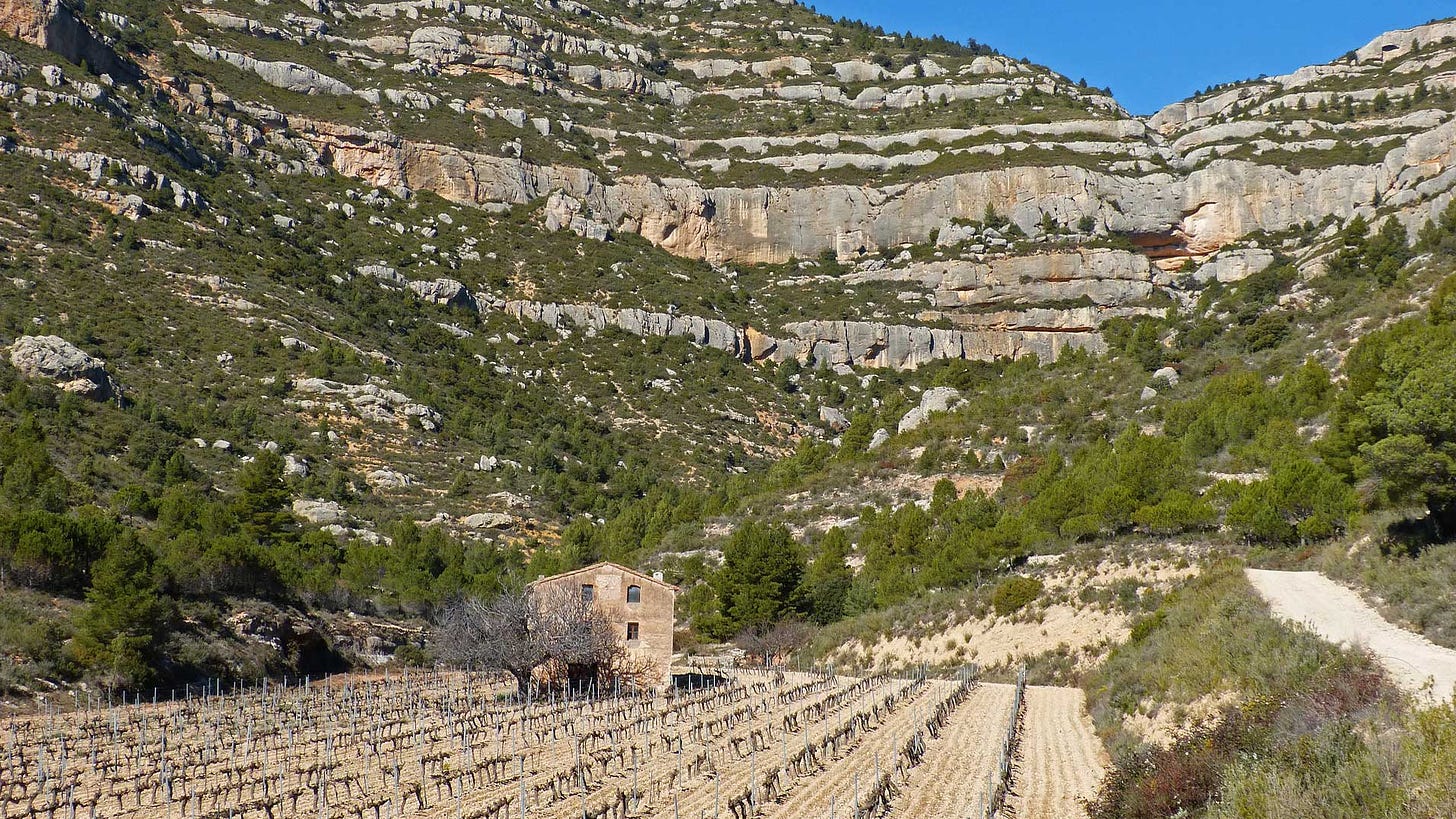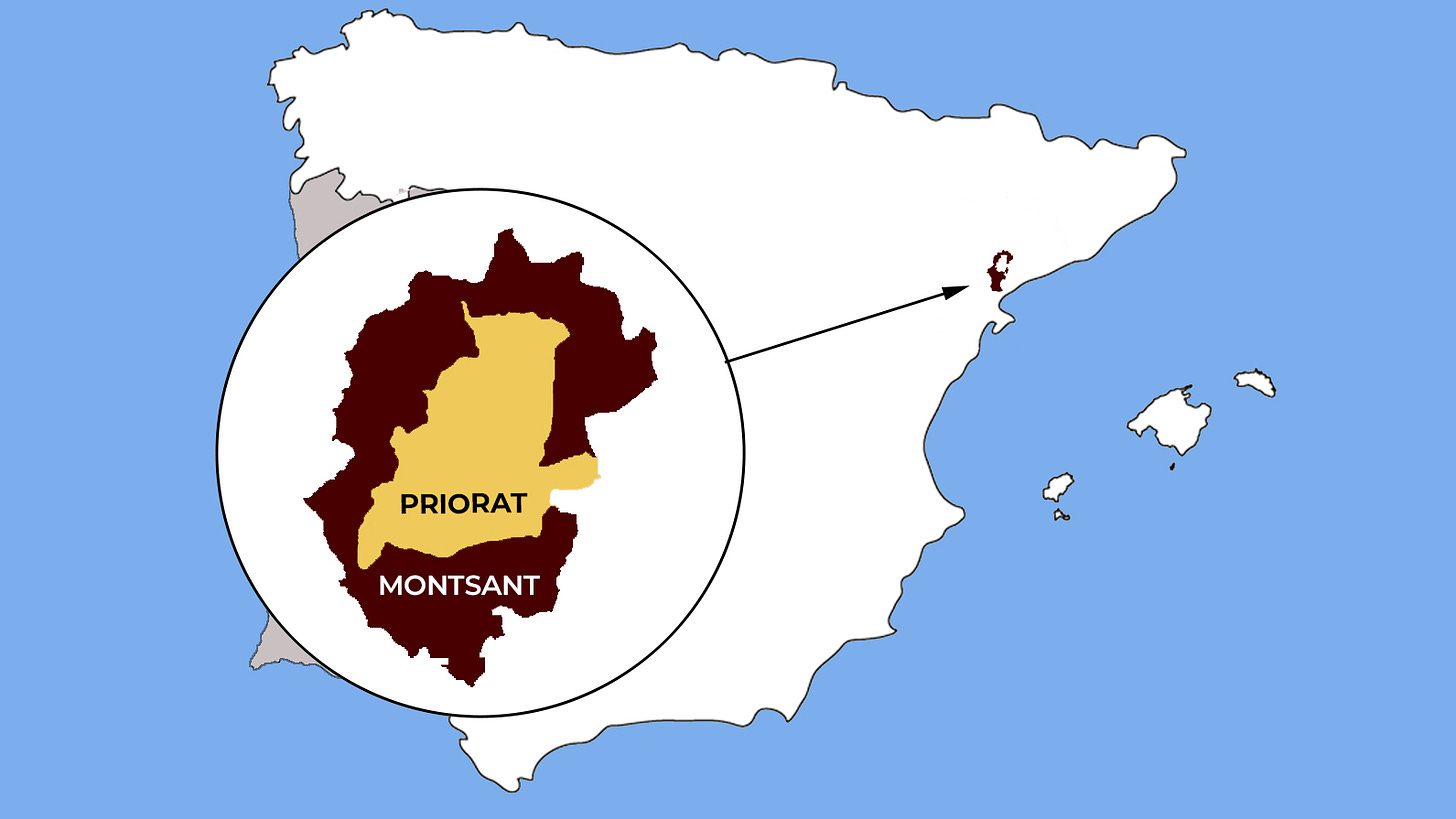DO Montsant
This article was originally published on our old website, Simply Spanish Wine
Key Points
Grape varieties: Garnacha, Cariñena, Garnacha Blanca, Macabeo
Hectares planted: 1,864 Hectares
Grape growers: 700
Wineries: 59
About Montsant
Look at a wine map and you’ll see that Montsant and Priorat together are like an egg, with Montsant the egg white surrounding Priorat the yoke. Growing up in the shadow of its more famous neighbour, Montsant nevertheless has a wine-producing history all of its own.
Its proximity to the town of Reus and the coast at Tarragona helped drive a flourishing export trade that reached its peak in the mid-nineteenth century. As elsewhere, the ravages of phylloxera took their toll in the second half of the century but also helped drive the creation of wine cooperatives in the region. Some, like the Falset Cooperative designed by Gaudí disciple Cesar Martinell, are architectural gems in their own right and well worth a visit as examples of the Catalan Modernist movement.
The terrain of Montsant
Like much of Catalunya, Montsant is defined by its mountains hills, ridges and slopes. Changes of altitude and orientation are the order of the day, and the region can be divided into a series of sub-zones from warmer, lower stretches in the south-west corner as the land falls away down towards the Ebro river - which meanders through the DO en route to the Mediterranean at the Ebro Delta some 70km to the south – and higher, wilder areas such as around La Figuera. Soils too are very varied; from a geologist’s perspective Montsant is an area with a lot of geological periods compacted into quite a small area, so you’ll find everything from granite and slate (llicorella) to sedimentary rocks or limestone present in some of the mountain ranges that envelope the region.
The climate of Montsant
The nearby mountain ranges, the Ebro river and sea breezes from the East all affect the climate in Montsant. Like neighbouring Priorat, it’s essentially a Mediterranean climate but with Continental influences which make for a series of microclimates depending on whereabouts you are in the DO.
Winters are generally cold and summers dry and hot, with humid evening winds from the Mediterranean helping to hydrate the vines during the ripening period. The semi-circle of mountains that surround the DO acts as a barrier to the maritime influences of the Mediterranean and helps maintain a marked difference in temperature between day and night while the grapes are ripening, which helps lock in aromas and boost acidity, making for more fruit-driven fresher white wines and more complex, aged red wines.
The grapes of Montsant
Old vine Garnacha - or Garnatxa as you’ll see it referred to in Catalan - both red and white, are the dominant grape varieties here, but with all the variations in altitude and soil type you’ll find plenty of different styles, and that continental influence helps ensure wines with plenty of plump, fleshy fruit backed up by welcome juicy acidity. Cariñena is another variety popular in Montsant which you’ll find blended with Garnacha or on its own.
In summary
Like neighbouring Priorat, dramatically beautiful landscapes and pleasant climate make Montsant a great destination for wine lovers and tourists alike. Base yourself in the main market town of Falset, for example, and you’re well-placed to explore the surrounding vineyards and villages.







